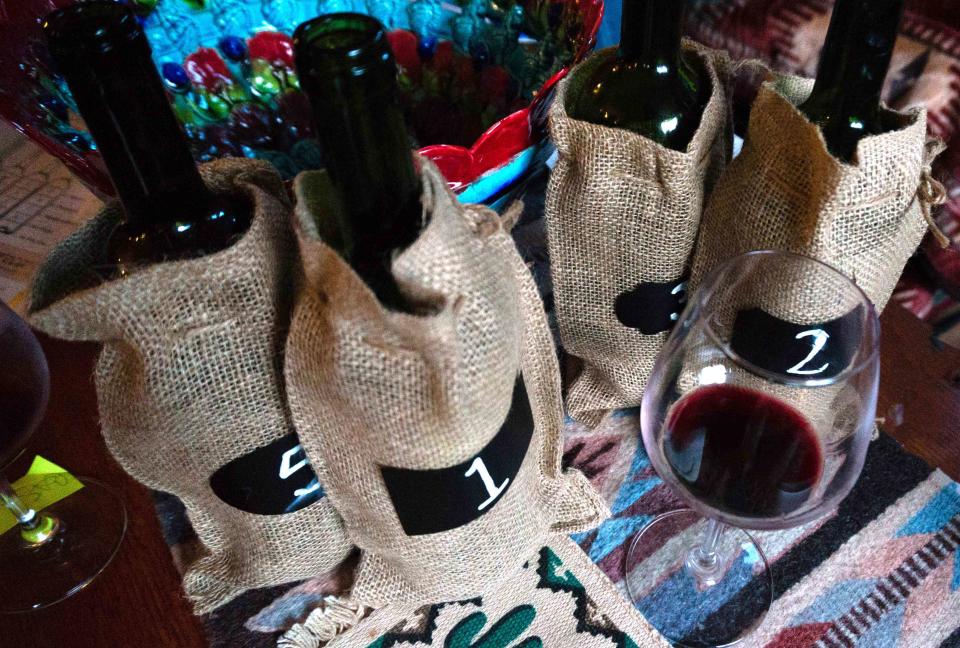5 Pro Tips for Hosting a Mystery Wine Tasting
If you’re looking for your next party game, try hosting a mystery wine tasting.

seeladyjane - Getty Images
The format of a label-free wine tasting is easy to organize, breaks the ice with strangers, turns friends into competitors, and ensures everyone wins. You’ll spend time together drinking wine, after all. As a longtime wine writer and Master of Wine candidate, I’ve spent much of my education participating in unlabeled wine tastings. While they can be fun for both novice and professionals, tasting without bias is also one of the best methods for learning the differences in texture, tannin, flavor, and complexity between grapes, regions, and styles through sensory analysis.
Inspired by another Blind Tasting With the Pros at the 2024 Food & Wine Classic in Aspen, here are the essential steps to host a controlled wine tasting.
Theme: Evaluate your audience and pick a theme. Even the best tasters need context, whether it’s as general as “white wines of the world.” Making your theme too broad, however, may frustrate novice tasters who lack the depth and breadth of experience to make an educated guess. It’s a social gathering, not an examination. Themes could focus around categories like grapes of California, regions of France, or famous red wines of Italy, or serve to compare and contrast Pinot Noir, Cabernet Sauvignon, or Sauvignon Blanc from around the world.
Delegation: Decide who buys and who pours. Everyone loves a host who will source and pour the wines, but having each guest or couple contribute a bottle around the theme is more fun, engaging, and financially feasible. If everyone brings a bottle, the host can brown bag them in the kitchen then assign each bottle a number. You might see tips online to wrap bottles in foil, but paper bags or even dedicated tasting bags (if you love this game enough) are eco-friendlier options.
Supplies: Organize glassware and decide on the tasting set up. If you’re willing to go the extra mile and remove visual clues, buy black glasses to hide the wine’s color. Imagine doing a yoga tree pose with your eyes closed. Tasting without color hints is hard. Otherwise, standard stem glassware will do. Additionally, participants need a pen and a piece of paper for notes, a spit cup, and a glass of water.
Format: For the tasting, either seat everyone at a table and pre-pour 1-2 ounces of wine in four to six glasses arranged at each place setting (depending on how many wines you’re tasting) or set all the numbered bags on a kitchen counter and let guests sample at their own pace. The first method requires more glassware but allows participants to go back and forth between glasses for comparison, while the second method requires just one glass per person and often ends up being more social and casual. After everyone has tasted, discuss clues and guesses before revealing the wine by removing the bag.
Snacks: Go for salted crackers or rustic chunks of bread to help tasters cleanse the palate between sips. Neutral carbs are especially useful when comparing big tannic wines.
Extra credit: If the goal is a casual party, skip the extra props. However, if you want to dive in like the pros, then print tasting charts and color wheels. Charts or grids will guide you through the tasting process with prompts to examine color, aroma, and flavor, texture (tannin, acid, creaminess, etc.), balance, length, complexity, and finish. Color and flavor wheels help with vocabulary.
By hiding the label, and even the color of the wine, you’re free of distractions and the power of suggestion and are forced to focus on experiencing what’s in the glass. Some call it a party trick. I call it a delicious meditation with festive results.
For more Food & Wine news, make sure to sign up for our newsletter!
Read the original article on Food & Wine.


